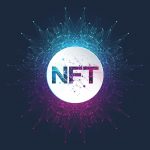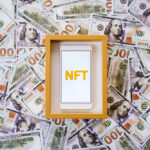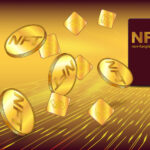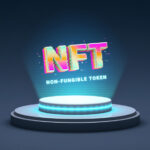NFTs have had a popularity explosion that only seems to progress. There has also been a greater cumulative interest, as many investors now contemplate their value and how to get involved in the market. Look no further than the CryptoPunks character portraits that managed to amass millions of dollars after having been sold as NFTs.
Of course, nothing in this space is guaranteed, and the NFT marketplace also bears the same level of risk and uncertainty. Still, it does have the potential to be the “next big thing.” If you are here, you likely lack a comprehensive grasp of what are NFT’s, and what their existence means for you.
Therefore, the information below is intended to guide you by providing all the fundamental details, which you can then use to decide if the prospect of NFTs is for you.
Table of Contents
What Are NFTs?
The simplest way to think of an NFT is as a digital asset that lies on a blockchain. As is the case with cryptocurrency, the blockchain is merely a record of transactions kept on a cluster of connected network nodes. It’s a public ledger, allowing all stakeholders to verify who owns an NFT and if it’s authentic and acceptable.
This workflow benefits the NFT from a value standpoint, as it mitigates the possibility of mass replication. There’s a digital signature attached to each NFT, which is akin to a fingerprint.
That way, the blockchain can precisely track each as it transitions from one owner to the next. Buyers of NFT art and other assets tend to use traditional currency (i.e., dollars) or cryptocurrencies for their purchases.
Note that an NFT is not only viewable by the owner. Viewing is a public privilege. Another important point to note is that copyright and NFT ownership can be mutually exclusive concepts. In other words, just because someone buys an NFT, it doesn’t mean that person owns the underlying copyright.
What Kinds of NFTs Are There?
The spectrum of what constitutes an NFT is quite broad. The more popular ones are along the lines of videos, music, and images. To give you an idea of how widespread the NFT umbrella is, consider that tweets can be classified as NFTs, allowing them to transition hands on the market just as other assets would.
For reference, Jack Dorsey, Twitter boss posted a tweet that reads “just setting up my twttr.” You may not think this anything special, but this tweet was sold as an NFT for a staggering $2.9 million.
NFT art tends to be among some of the most valuable acquisitions out there. If you were to review the most astounding sales on record, you’d find that many of them fall under this category.
Other potential NFT candidates include digital clothing, land in virtual environments, and even highlights of crucial basketball game moments.
Who Uses NFTs?
By the time you’ve read this, the answer to this question could potentially change, as new players seem to be entering the NFT space almost daily. At the time of writing, some of the most prolific NFT users include gamers, artists, social media users, and various businesses.
Artists, for example, take this opportunity to monetize their work to a greater degree. Art sales are not new, but NFT art sales constitute a more recent phenomenon. Now, people who are interested in creative pieces no longer need to depend on a single way of supporting their favorite creators.
The video game world can’t be left out of the festivities. Digital assets were always a bit of a gray area, as gamers seem to buy nothing more than the rights to use pieces of work owned by developers and publishers.
NFTs brought things into uncharted territory, as buyers can now purchase these digital in-game assets and have ownership shift from the parent gaming company. So, a “sale” before that would constitute an illegal practice and infringe copyright could potentially be a perfectly legal transaction today.
If you have purchased a piece of digital content and have assumed complete ownership, nothing is stopping you from selling it to the next person, choosing to add to the price tag if you so desire.
Don’t make the mistake of thinking that this only applies to one-off digital pieces. Unsurprisingly, entire games are being spearheaded and created that revolve around the NFT workflow.
Why Do NFTs Matter?
So, here’s this revolutionary concept that has a bunch of people and businesses making some extra money. The question is, why should you care? It goes beyond the typical “as an investor, you should care about any kind of investment opportunity available” thought process.
The fundamental principle of possession is what makes this area so intriguing. Enthusiasts are already describing it as the future of ownership. What happens as more kinds of property begin to change hands this way? Would it not become a standard? How much can be tokenized?
In some areas, it may seem a bit scary. In others, however, you may view it more on the innovative and positively transformative side. Visual and performance artists, for example, have always found trouble in keeping their works monetized and ensuring that they are compensated.
If the official digital signature is yours and you can prove it, that means a greater claim to royalties whenever your trademarks are used.
Understanding NFT Risks
Higher rewards mean high risks. As beneficial as NFTs may sound, there are downsides to consider. One of the biggest of these is the absence of regulation. Depending on the way you view things, this could be an advantage. It’s akin to the way cryptocurrencies work with a lack of government regulation, leading to the decentralized and fair nature that it brings.
The NFT creation space is also not the most restricted in the world. Though a buyer would have to agree on the cost before purchase, who is verifying that the items being sold have a value? Even if something were truly valuable during its “hot” phase, what happens when the hype dies after you’ve purchased it? Don’t you now have to absorb that hefty cost?
Real names are not the order of the day in this industry, as you’re far more likely to encounter pseudonyms. Additionally, malicious entities are out in their numbers trying to commit fraud and scam unsuspecting victims.
The final risk is to be expected and it’s just the unpredictable nature of the investment world. Even if you’re not affected by a slowing hype train or attempted fraud, natural market factors and random real-world events have a lot to do with how values change in the NFT marketplace.
NFT Controversy
If this is the first piece you’ve read on NFTs, then you’re probably unaware of this element. If not, then you already know that while there is much to earn and much to be excited about, controversy isn’t far behind.
Look back at Bitcoin mining at its objective peak. No is saying that Bitcoin’s popularity is now a thing of the past, but consider the era in which the computing power dedicated to mining was truly off the rails.
Just about anywhere you looked, you could find articles about the carbon footprint, and the way miners were forcing the prices of GPUs up. There were even whole farms of high-powered PCs dedicated to the cause.
Similarly, the creation of blockchain assets for NFTS poses a cause for concern, as they often require an unbelievable amount of processing power. The requirement is one thing, but the associated energy output that is necessary to meet it is where the problem lies.
Therefore, you can imagine that environmentalists are not having a good time. Even if you don’t fall under the environmentalist umbrella, concern for the current state of the earth could easily put you on this side of the fence.
You needn’t look any further than a piece of NFT art and titled “Coronavirus.” Just over 190-kilowatt hours of energy were used during its creation phase. This number doesn’t sound too bad compared to others when viewed purely as a numeric value.
What happens when you contextualize it? Remember this is just one asset. For reference, a single-person household could realistically consume this much energy or even less in a single month. Jamaican households, for example, do so on average. It’s also critical to bear in mind that these are along the lines of “simpler” NFTs.
Sega, known for the Sonic series of video games, found itself in hot water after it announced a desire to start creating NFT’s. ArtStation faced a similar situation and decided against the course of action after consideration of both the backlash and the carbon footprint that the practice would create.
The bad news is that the choices the content creators make only represent part of a full solution. At the core, one must remember how a blockchain works. To keep records secure and the ledger running, complex mathematical equations are at the center of operations. They require an astronomical amount of processing power because of their nature.
Switching gears to Ethereum, it alone, based on blockchain transactions, has managed to burn a comparable amount of energy to the entirety of Libya.
The final piece of controversy harkens back to a statement made above about finally having an alternative means to support artists for the work they do. In a perfect world, the biggest of NFT sales would be from an artist to a supporter, meaning the time and energy put into each piece of work would be handsomely rewarded.
Unfortunately, that’s not the way it’s working in the real world, since the people who can claim digital ownership through hefty purchases are often not the original creators. Throw in the fact that buying an NFT and the associated buy-in fees are nothing short of astronomical. Therefore, it feels as if the ranks of the already wealthy are the true beneficiaries.
How to Invest in NFTs?
NFT investment boils down to the traditional actions of buying and selling. Instead of a traditional exchange, you have a dedicated NFT marketplace, which only deals in digital asset transactions.
Like eBay, purchases can be made at static price points or via an auction style. The latter creates a volatile space, which is responsive to market demand.
A crypto wallet is a requirement to store the cryptocurrencies needed for an NFT purchase. The currency you use most also much the blockchain technology that the NFT is built on. For example, if the NFT you want is built on Ethereum’s blockchain, then you wouldn’t want to buy Litecoin. Instead, you would buy ETH tokens.
It would be in your best interest to look around to find out which marketplaces support NFT purchases. Some are general-purpose, while others are niche sites that you can use if you are interested in a particular asset.
Selling is the other side of the coin after you already own an NFT. You can list it for sale, which requires a fee to be paid to the marketplace of choice. The fees are not static and depend on the blockchain network at play since this directly translates to the computing power needed.
You then upload the content piece to be sold and choose to do either an auction-style sale or a fixed price sale. The marketplace verifies the assets after uploading, and it also takes care of the digital signature transfer. Finally, the funds are transferred to your wallet with the difference of blockchain computing charges and the listing fee deducted.
Who Can Make an NFT?
Theoretically, anyone can make an NFT, but practically, that’s not the case. You can create a piece of content, take it through the minting process (turning it into an NFT on a blockchain) and sell it on a chosen marketplace.
Of course, you must have a crypto wallet to do this. However, if you don’t have the upfront costs, then you can’t participate. There is the gas fee for the energy it takes to complete transactions, hidden fees, and selling fees. The worst part is these prices are not constant, as daily events can impact all the prices, including the conversion fees.
Now you understand why many original content creators end up not being able to play much of a part in the NFT market.
Final Remarks
Now, you should have a much better understanding of what are NFTs, how to invest in them, and how the workflow works on an NFT marketplace. While there is no telling if this is going to be viable in the long term, its current state makes for a very intriguing situation.
WeInvests is a financial portal-based research agency. We do our utmost best to offer reliable and unbiased information about crypto, finance, trading and stocks. However, we do not offer financial advice and users should always carry out their own research.
Read More







